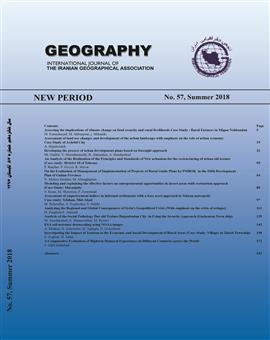Assessing the implications of climate change on food security and rural livelihoods Case Study : Rural Farmers in Migan Nehbandan
Subject Areas :Javad Mikaniki 1 , Morteza Esmailnejad 2 , Mohammad Akbarpour 3 , Mahmaoud Falsoleyman 4
1 -
2 -
3 - Razi University
4 -
Keywords: Climate Change Food Security Livelihoods Rural Households Nehbandan ,
Abstract :
This paper aims to investigate the impact of climate change on food security in the villages of the Migan village of Nehbandan district of South Khorasan. In order to achieve this goal, target groups (100 households were randomly selected) were identified to measure the impact of climate change on food security and were indexed to identify the various domains of food security. These indicators include indicators of access to rural food insecurity and food insecurity ranges of rural households. Finally, rural households were classified in terms of food security in four groups: mild food security, moderate food security, food insecurity. Changes in key food security and household livelihoods as a result of climatic changes in the region have been clarified with regard to field observations and key interviews with rural people. The main finding is that societies that have never experienced extreme temperatures, drought and dust have not experienced it, they are currently in abundance. The research findings revealed that all households in the statistical community have food insecurityHouseholds vulnerable to climate change recorded a high level of food insecurity. Households prefer to adopt a variety of strategies in response to climate change that helps improve household food security. Non-agricultural incomes play an important role in reducing food insecurity in households.
